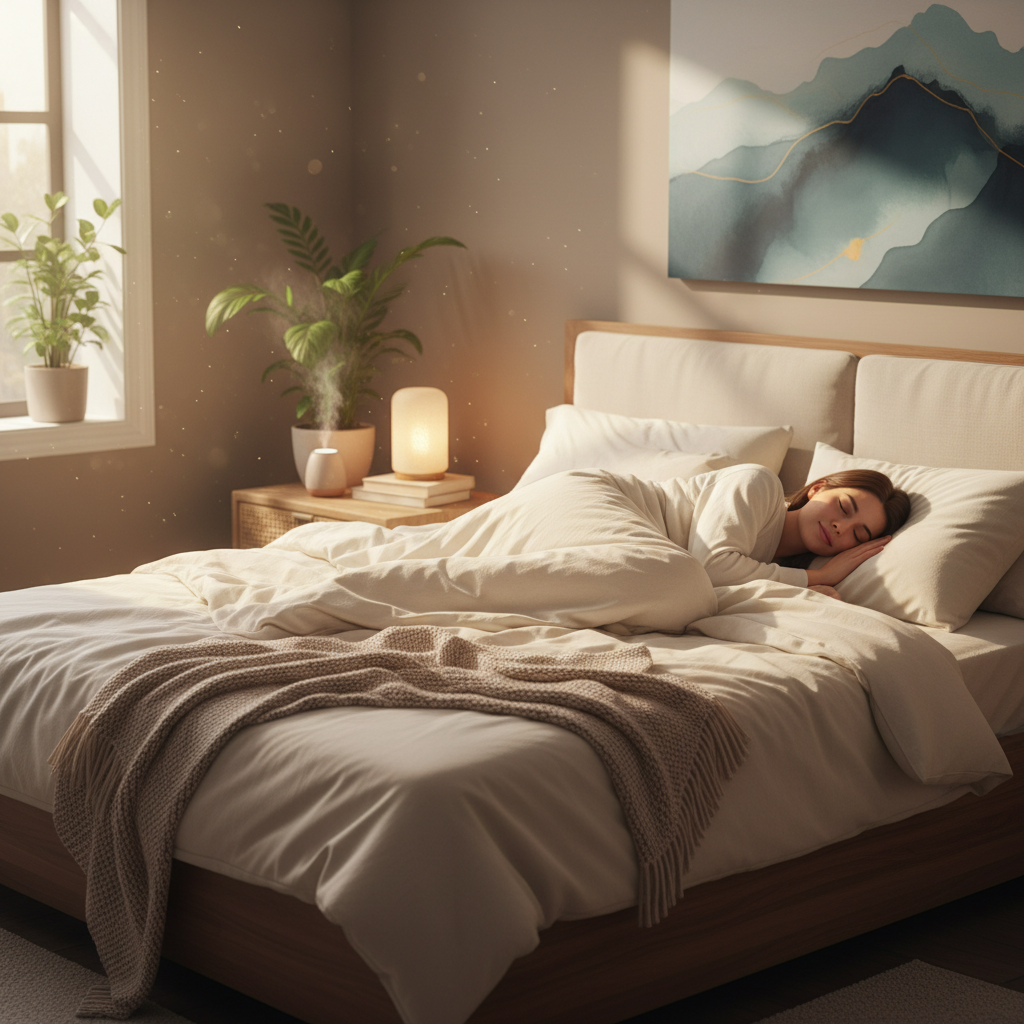
Table of Contents
Introduction
Screens are everywhere these days—smartphones buzzing in our pockets, laptops glowing on our desks, TVs dominating our living rooms. And honestly? Sometimes it feels like we’re drowning in digital noise. If you’ve ever caught yourself mindlessly scrolling at 2 AM or felt that familiar brain fog after a Netflix marathon, you’re definitely not the only one. The question isn’t whether we use screens too much (spoiler alert: most of us do), but rather how we can take back control without going full hermit mode.
Here’s the thing about excessive screen time—it’s sneaky. Sure, your eyes might feel tired after staring at a monitor all day, but the effects go way deeper than that. We’re talking about your physical health, mental wellbeing, how productive you actually are, and even the quality of your relationships. That’s why getting a handle on your screen habits isn’t just nice-to-have advice—it’s essential. Learning time management skills can be a game-changer here, giving you the tools to reclaim your day and make space for real-world experiences. And when screens start messing with your sleep (which they absolutely will), developing healthy sleep habits becomes your secret weapon for feeling human again.
Let’s talk about what all this screen time is actually doing to your body. Ever notice how your neck aches after a long work session? That’s your posture crying for help. Hours hunched over devices can lead to real discomfort and chronic pain down the road, which is exactly why figuring out how to improve posture can make such a huge difference in how you feel day-to-day. But it’s not just physical—your mind takes a beating too. Too much screen time cranks up stress and anxiety levels, making stress reduction methods incredibly valuable for hitting the reset button on your nervous system.
The mental health piece is where things get really interesting (and a bit concerning). Constant connectivity does weird things to our brains. Ever feel like you need your phone to feel entertained or connected? That’s digital dependence talking. Simple practices like how to start journaling can help you reconnect with your thoughts and emotions without needing a screen as your middleman. Many people struggle quietly with the psychological weight of always being “on,” which makes understanding mental health awareness facts crucial for recognizing when our digital habits might be throwing our mental balance out of whack.
What You’ll Learn in This Guide
Ready to take control of your screen time? Here’s exactly what we’re going to cover together:
- Understanding Excessive Screen Time: We’ll explore what counts as too much screen use, the common causes driving it, and why managing this time is vital for your overall health and productivity.
- Practical Strategies to Cut Down Screen Usage: Learn actionable tips such as setting limits, creating no-screen zones, and replacing screen time with enriching hobbies and physical activities for a healthier lifestyle.
- Tailored Advice for All Ages: Whether you’re a parent, teenager, or adult, discover age-appropriate approaches to effectively navigate screen use within your family or personal routine.
- Leveraging Technology Wisely: Not all tech is the enemy; find out how to use apps and device settings to monitor and manage screen time, striking a balance rather than complete avoidance.
What you’ll discover isn’t just about cutting screen hours (though we’ll definitely do that). It’s about upgrading your entire quality of life. We’re going to dive into the physical, mental, and social benefits that come when you make thoughtful changes to your digital habits. And look—if your screen use is causing serious distress or feels completely out of control, we’ll also talk about when it might be time to get some professional support. No judgment here.
Before we jump into strategies, let’s get real about what excessive screen time actually looks like and why it matters. Understanding the effects of stress on the body helps connect the dots between your digital habits and how you feel physically and mentally. It’s all connected—your screen time, your stress levels, your energy, everything. That’s why learning how to avoid burnout at work pairs perfectly with screen time management as part of taking better care of yourself overall.
Now, before we dive deep into the nitty-gritty, I want to be clear about something: we’re not aiming for digital perfection here. Balance is the name of the game, not complete screen avoidance (because let’s face it, that’s not realistic in 2024). You’ll find practical, doable steps that actually fit into real life. We’ll explore ways to weave in movement and relaxation—like breathing exercises for relaxation—to counter that mental fog that comes from too much screen time. Small changes, big results. That’s the approach.
So here we are, about to embark on a journey toward reclaiming your time and building a healthier relationship with technology. No guilt trips, no unrealistic expectations—just practical tools and insights to help you feel more in control of your digital life. The strategies ahead will give you everything you need to reduce screen time in a way that actually sticks, creating lasting change that supports both your wellbeing and your real-world goals.

Here’s something we all know but rarely admit: our screens have basically taken over our lives. Between work emails, social media scrolls, and Netflix binges, we’re staring at digital displays more than we’re looking at actual humans. Sound familiar? You’re definitely not alone in this struggle. The thing is, all this screen time isn’t just making our eyes tired—it’s messing with our sleep, our relationships, and our overall well-being in ways we’re only starting to understand. But here’s the good news: you can absolutely take back control without going full digital hermit. We’re going to walk through why our screen habits got so out of hand and, more importantly, what you can actually do about it.
Understanding Excessive Screen Time and Its Impact
So what exactly counts as “too much” screen time? Great question—and honestly, it’s not just about the hours (though spending 8+ hours a day scrolling definitely isn’t ideal). Excessive screen time is more about when your device use starts interfering with real life. Maybe you’re missing sleep because you can’t put your phone down. Or you realize you haven’t had a proper conversation with your family in days. The pandemic basically turned all of us into screen zombies—remote work, online school, video calls with grandma. Suddenly, everything required a screen. To get a handle on this, you might want to brush up on time management skills that can help you monitor and actually control when and how you use your devices.
Why did we end up here? Well, it’s not entirely our fault. (Though we’re not completely off the hook either.) Work and school basically moved into our living rooms, which meant the line between “work time” and “me time” got completely blurred. Those apps on your phone? They’re literally designed by teams of psychologists to keep you hooked. Every notification, every infinite scroll, every “you have memories to look back on today”—it’s all calculated to grab your attention and never let go. And let’s be real: when was the last time you had exciting offline options readily available? Sometimes it’s just easier to default to the screen. This whole cycle ties into broader patterns of stress and overwhelm, which is why learning about stress reduction methods can be a game-changer for your digital wellness too.
Key Factors Behind Excessive Screen Use
Let’s break down what’s really driving all this screen time. Understanding the “why” makes it way easier to tackle the “how to fix it” part:
- Work and Educational Demands: Remote work turned our homes into 24/7 offices. Now we’re expected to be reachable all the time, and online school means kids are glued to screens for learning—then they want to unwind with more screens.
- Entertainment and Social Media: Netflix asks if you’re still watching, but Instagram never does. These platforms use seriously sophisticated algorithms to figure out exactly what will keep you scrolling. Before you know it, three hours have vanished.
- Lack of Offline Alternatives: When’s the last time you had a hobby that didn’t involve a screen? Or hung out with friends without everyone checking their phones? We’ve accidentally trained ourselves to think screens are the only source of entertainment.
- Technology Accessibility: Your phone is always right there. In your pocket, on your nightstand, charging next to your breakfast. It’s like having a casino in your pocket that never closes and always has something “urgent” to show you.
These factors create this perfect storm where excessive screen use feels almost inevitable. But here’s what’s encouraging: once you recognize these patterns, you can start making deliberate choices to break them.
Now that we’ve figured out how we got into this mess, let’s talk about getting out of it. The strategies coming up aren’t about becoming a digital monk—they’re about finding that sweet spot where technology serves you instead of the other way around.
Effective Strategies to Reduce Screen Time for a Balanced Lifestyle
Okay, let’s get practical. Reducing screen time isn’t about throwing your phone in a drawer and going back to the stone age. It’s about being intentional with your digital choices so you can actually enjoy your real life again. Think of it like going on a diet—you don’t stop eating, you just make better choices about what and when you eat. The same goes for screen time. Building awareness through practices like how to start journaling can really help you notice your patterns and stay mindful about your digital habits. When you start replacing mindless scrolling with activities that actually make you feel good, you’ll wonder why you waited so long to make the change.
The secret sauce here is substitution, not deprivation. Instead of just taking away screen time, you want to fill that space with stuff that’s actually satisfying. Physical movement is huge—it gets you out of your head and into your body, plus it naturally boosts your mood. Real-world hobbies give your brain something to focus on that isn’t designed to be addictive. And here’s something interesting: when you start having better face-to-face conversations and spend time outdoors, you’ll find yourself naturally reaching for your phone less often.
Key Strategies for Managing Screen Time
Ready for some changes that actually work? Here’s what you can start doing today:
- Set Screen Time Limits: Your phone already tracks this stuff—use it! Set daily limits for social apps and actually pay attention when you hit them. Start with small reductions so you don’t feel deprived.
- Create No-Screen Periods: Pick specific times that are screen-free zones. Dinner table, first hour after waking up, last hour before bed. Your brain needs these breaks more than you realize.
- Replace Screen Use with Physical Exercise: This one’s a game-changer. When you feel the urge to mindlessly scroll, do jumping jacks instead. Go for a walk. Stretch. Your body will thank you, and you’ll actually feel energized rather than drained.
- Pursue Hobbies and Socialize Offline: Remember hobbies? Those things you used to do for fun before everything moved online? Pick up that guitar, start that art project, call a friend for coffee. Real-world activities are way more satisfying than anything happening on your screen.

Let’s be honest—managing screen time has become one of those things we all know we should do better, but somehow never quite get around to. Between work emails, social media scrolls, and that “just one more episode” mentality, our devices have a sneaky way of eating up way more time than we planned. And our bodies? They’re definitely feeling it. Eye strain, that nagging neck pain, restless nights—sound familiar? The thing is, recognizing these patterns is actually your first win. Once you see how your screen habits connect to how you feel, you can start making changes that actually stick.
Here’s what works: being intentional about when and how you use your devices. Setting boundaries doesn’t have to feel like punishment—think of it more like creating space for the good stuff. Maybe it’s putting your phone in another room during dinner, or swapping that late-night scroll session for a book. The key is finding what fits your life, whether you’re dealing with kids who seem glued to tablets or trying to break your own social media habit. And here’s a plot twist—technology can actually help you use less technology. Those screen time apps and settings? They’re surprisingly effective at giving you the reality check you need.
Ready to make some real changes? Start with your time management skills—when your day feels more organized, you’re less likely to mindlessly reach for your phone. If you’re feeling overwhelmed by constant notifications, these stress reduction methods can help you find your calm without needing a screen break. Better healthy sleep habits will give you the energy to actually enjoy your offline time. Want to reconnect with your thoughts? Starting a journaling practice might surprise you—it’s like social media for your soul, but better. And if all that hunching over screens has left you feeling like a question mark, learning how to improve posture will make a real difference. For the bigger picture, understanding mental health awareness facts can help you see how digital wellness fits into your overall well-being.
Here’s the truth: this isn’t about becoming a digital minimalist overnight or throwing your phone in a drawer. It’s about finding a balance that works for you, one small change at a time. Maybe today you put your phone on silent during lunch. Maybe tomorrow you try reading instead of scrolling before bed. Every small step counts, and you don’t have to be perfect—just consistent. Need more support along the way? Our mental health awareness facts guide has tons of practical insights to keep you motivated. When you start reclaiming time from your screens, you’ll be amazed at what opens up—more energy, clearer thinking, and yeah, maybe even some actual conversations with the people around you.
Frequently Asked Questions
-
How can I track my screen time effectively?
- Use built-in device features or third-party apps to monitor daily usage patterns, helping you identify areas for improvement.
-
What are the health risks of too much screen time?
- Excessive screen time can cause eye strain, poor posture, sleep disruption, increased stress, and negatively impact mental health.
-
Are there recommended screen time limits for children?
- Yes, many health organizations suggest specific daily screen time limits based on age to support healthy development.
-
How can parents encourage kids to reduce screen time?
- Parents can set clear rules, model positive screen habits, and provide engaging alternative activities to encourage less device use.
-
Can technology actually help reduce screen time?
- Yes, apps and device settings can track and limit usage, assisting users in managing their screen habits more mindfully.
